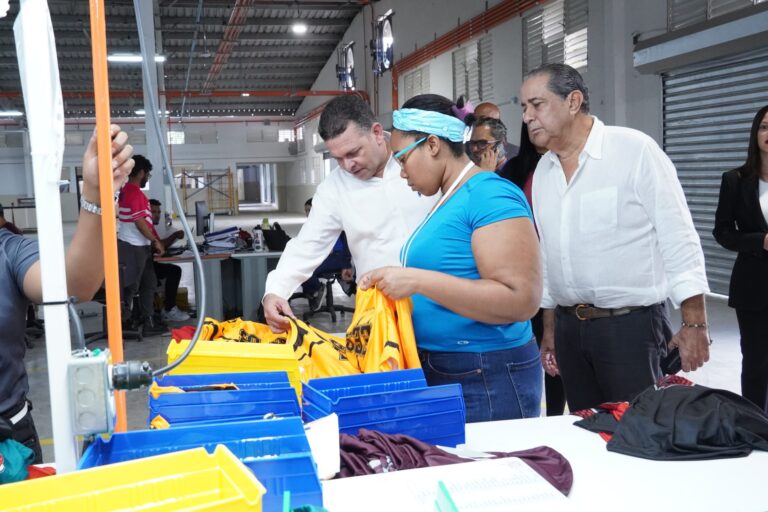
2024 closed with the Dominican Republic firmly positioned as the main investment and visitor destination in the Caribbean and Central America. It is the sixth country in per capita income in Latin America and the Caribbean when measuring GDP in purchasing power parity.
An excellent year in which we broke the 11 million visitor barrier for the first time; with 8,535,742 million passengers arriving by air (a remarkable growth of 8% compared to 2023) and 2,656,305 million cruise passengers between January and December.
All of this has allowed us to rack up an inventory of more than 400 hotels and 84,000 rooms on our half island.
By combining the arrival of visitors by air and sea, we can see not only a diversification in the visitor matrix, but also the ability to potentiate destinations that don’t compete on equal terms with the destinations that receive most tourists due to accommodation availability. This is the case of Puerto Plata, Samaná and Pedernales.
These 3 destinations lack a sufficient supply of hotel rooms. What they do have is top quality cruise terminals (in the case of Puerto Plata and Pedernales). In addition, all three have a great selection of places to visit (extraordinary beaches in Samaná and Pedernales, and excellent beaches in Puerto Plata paired with a wide range of excursions) that have been essential for their success as cruise destinations. Puerto Plata also has a historical and cultural offer that we hope will continue to grow.
The other phenomenon that came together this year in the country is the presence of large globally renowned U.S. hotel brands led by Marriott and Hyatt, followed by Hilton, IHG and Wyndham, with announcements that St. Regis, Four Seasons, Rosewood and Ritz Carlton are coming soon.
Gone are the final years of the last century when tourism in the Dominican Republic depended almost exclusively on tour operations and travel agencies, and charter flights from Germany, Canada, England and Italy, etc.
122,252 commercial passenger flights were carried out in the country During 2024. Of the 2,353,231 foreign and non-resident Dominicans tourists that arrived from the U.S. as of October, more than 1,300,000 arrived via New York, which is no surprise, but it does indicate the enormous opportunities lying ahead.
With more than 1 million tourists a year, Canada is still our second source market. The current winter season should be particularly positive for the Dominican Republic if we consider that our main competitor for the Canadian market is Cuba, which has seen a significant drop in tourism due to its weakened economy, among other factors.
2024 was a year of marked trends in the industry and in the positioning of global North American hotel franchises in our country. In an article in the Bohio Magazine January 2023 edition, we drew attention to the fact that Spanish investors with hotels in the country were not only backing large North American brands to market their hotels, where ownership and marketing were partially or totally unrelated, even more so there were and still are cases where they ceded their operation. Ownership, marketing and sales, and hotel operation were detached from the vertical integration that existed before.
The clear reason for this trend of, let’s say, the last 10 years is the change in the travel model, and the leading role taken by the US and Canada as source markets for the Dominican Republic, followed by the Latin American markets of Colombia, Argentina and Puerto Rico, where Spanish brands enjoy neither the presence, success nor penetration of North American brands. Today the trend is solid.
Last October, GrupoPiñero and Hyatt Hotels Corporation signed a masterplan to create a long-term strategic alliance between subsidiaries of both companies to manage Bahia Principe brand hotels under the ‘asset-light’ model. The joint management company will be 50% owned by both groups and will own the Bahia Principe Hotels & Resorts brand. The long-term strategic alliance is expected to increase Hyatt’s portfolio of all-inclusive rooms by 30%, adding more than 12,000 rooms in Mexico, the Dominican Republic, Jamaica and Spain.
Prior to that in November 2022, Iberostar signed a strategic agreement with Intercontinental Hotels Group (IHG) to market up to 70 beachfront hotels (24,300 rooms) to be integrated into IHG’s system under the Iberostar Beachfront Resorts brand.
Needless to say, Marriott, Hyatt and Hilton have had a dizzying year in the Dominican Republic, adding hotels and even mixed-use rooms to their portfolio in the country.
Finally, these trends are what impulse us to go for more and the main challenge at first glance is the training of executive and plant personnel to serve tourists, especially those in the luxury market who expect their experience in the country to be similar, if not better, than that offered by the brand in other destinations (regardless of whether they are beach or urban properties).
A smile is not enough, although it always helps!
Author: Enrique De Marchena Kaluche, lawyer and past President of the CHTA and ASONAHORES.
Source:



